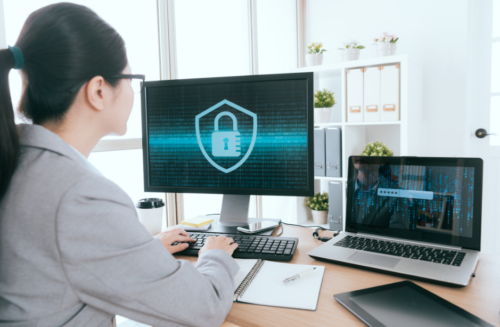Did you just click on a suspicious link, and now you’re feeling a wave of anxiety wash over you? We’ve all been there. In today’s digital age, cyber threats are a constant concern, and it’s essential to know how to handle situations like these calmly and effectively. So take a deep breath and relax. It’s difficult to determine the best path forward in times like these, and that’s why we’re walking you through the steps you should take if you find yourself in this predicament. By following expert advice, you’ll be able to confidently navigate the aftermath of clicking on malicious links.
Navigating the Aftermath of Clicking on Malicious Links
You were innocently browsing the internet, and then it happened—a single click on a seemingly harmless link unleashed a world of trouble. The effects can vary from mild inconveniences to serious security breaches, but one thing is sure: clicking on malicious links can be a nerve-wracking experience. But fear not – you’ve come to the right place.
To manage these risks, you need clear and actionable steps to navigate the aftermath of clicking on malicious links. Whether it’s a phishing attempt, malware infection, or social engineering ploy, our expert advice will help you mitigate the damage and protect yourself from future threats.

Understanding the Risks
Before diving into the necessary actions you should take after clicking on malicious links, let’s first understand the risks you might have exposed yourself to. By being aware of these risks, you’ll gain valuable insight into the potential consequences and tailor your response accordingly.
Recognizing Phishing Attempts
Phishing attempts are among the most common ways cybercriminals deceive unsuspecting individuals into revealing sensitive information. These fraudulent emails, messages, or websites often mimic legitimate entities and prompt users to disclose passwords, financial details, or other personal data.
To spot a phishing attempt, look for signs such as misspelled email addresses, grammatical errors, urgent requests for personal information, or suspicious URLs. Always verify the authenticity of an email or website by contacting the purported sender through a trusted means of communication.
Identifying Malware Infections
Clicking on malicious links can also result in a malware infection. Malware, short for “malicious software,” refers to programs designed to disrupt, damage, or gain unauthorized access to computer systems. It can range from relatively harmless adware to more dangerous forms like ransomware or keyloggers.
Symptoms of a malware infection may include slow system performance, unexpected pop-ups, disabled antivirus software, or unauthorized file and setting changes. If you notice any of these signs, acting swiftly to minimize the damage is crucial.
Unveiling Social Engineering Techniques
Social engineering is a tactic employed by cybercriminals to manipulate individuals into revealing sensitive information or performing certain actions. It often involves exploiting human psychology, trust, and emotions.
Examples of social engineering techniques include impersonating a trusted contact, using urgent language to create a sense of panic, or leveraging current events to make scams appear more credible. By being aware of these tactics, you can stay one step ahead and avoid falling victim to such schemes.

Immediate Actions to Take
Once you understand the risks associated with clicking on malicious links, there are immediate actions you should take to mitigate the damage. Time is of the essence, so don’t delay following these crucial steps.
Disconnect from the Network
After clicking on a suspicious link, the first step is to disconnect from the network immediately. This includes turning off your Wi-Fi connection and unplugging any Ethernet cables. By doing so, you isolate your device from potential threats and prevent further unauthorized access to your system or data.
Run an Antivirus Scan
After disconnecting from the network, run a thorough antivirus scan on your device. Make sure your antivirus software is up to date before initiating the scan. The antivirus program will scan your files and applications, detect any malware or viruses present, and either quarantine or remove them from your system.
Change Your Passwords
One of the most critical steps is changing your passwords for online accounts. Start with your email account and then proceed to other important accounts such as banking, social media, and e-commerce platforms. Choose strong, unique passwords that are difficult to guess, and consider using a password manager to help you generate and store them securely.

Cloud Computing Data Management Concept
Assessing the Damage
After the immediate actions are taken care of, it’s time to assess the extent of the damage caused by clicking on the malicious links. By conducting a thorough assessment, you can identify and address any potential compromises.
Monitor Your Accounts
Keep a close eye on your financial accounts, social media profiles, and other online platforms that may contain sensitive information. Look for any unauthorized transactions, suspicious activities, or changes in account settings. If you notice anything unusual, report it immediately to the relevant service provider.
Review Financial Statements
If the malicious links were related to a financial institution or online payment platform, carefully review your financial statements for unusual charges or withdrawals. If you detect fraudulent activity, contact your bank or credit card issuer to report the incident and dispute any unauthorized transactions.
Contact Relevant Parties
Sometimes, it may be necessary to notify the appropriate parties about the incident. This includes reporting phishing attempts to your email service provider, notifying your employer’s IT department if the device affected is company-owned, or informing law enforcement authorities if the incident involves significant security breaches or financial losses.
For a managed IT service provider that offers you tips and helps protect you from these malicious links, contact TCS for more information and a free consultation regarding managed IT.

Strengthening Your Cybersecurity
Now that you’ve taken immediate action and assessed the damage caused by clicking on malicious links, it’s time to focus on fortifying your cybersecurity defenses. Implementing these preventive measures will reduce the likelihood of future attacks and protect you against similar threats.
Educate Yourself and Your Team
Knowledge is power when it comes to cybersecurity. Stay informed about cyber threats, phishing techniques, and best practices for staying safe online. Consider providing training sessions or educational materials to your team members or employees to ensure everyone understands their role in maintaining a secure digital environment.
Implement Multi-Factor Authentication
Adding an extra layer of protection to your accounts through multi-factor authentication (MFA) significantly enhances your cybersecurity posture. MFA requires users to provide two or more pieces of evidence (e.g., password, fingerprint, text message code) to gain access to an account. By implementing MFA, the attacker still needs additional verification to gain unauthorized access, even if your password is compromised.
Keep Software Up to Date
Regularly updating your operating system, web browsers, antivirus software, and other applications is crucial in protecting against known vulnerabilities. Cybercriminals often exploit outdated software to launch attacks or infiltrate systems. Enable automatic updates whenever possible to ensure you’re running the latest versions with the most recent security patches.
The Bottom Line for Malicious Links
Clicking on malicious links can be a troubling experience, but it’s essential to remain calm and take immediate action. By following the steps outlined in this article, you can navigate the aftermath of a security breach effectively and safeguard yourself from future cyber threats.
Recap of Important Steps
- Disconnect from the network immediately.
- Run an antivirus scan to detect and remove any malware.
- Change your passwords for all online accounts.
- Monitor your accounts for suspicious activity.
- Review financial statements for unauthorized transactions.
- Contact relevant parties to report the incident.
Protecting Yourself in the Future
Prevention is critical when it comes to cybersecurity. Remember to:
- Stay vigilant and recognize common phishing techniques.
- Keep your devices and software up to date.
- Educate yourself and your team about cyber threats.
- Implement multi-factor authentication for added security.
By incorporating these practices into your digital life, you’ll minimize the risk of being a victim of cyberattacks and protect your sensitive information.
Remember these when you must navigate the aftermath of clicking on malicious links. Remember, the key is to stay calm, act quickly, and take preventive measures. By doing so, you can safeguard yourself and your digital assets from potential harm.
Trust TCS to Manage Your Malicious Links Concern
With the steps you should take after clicking on malicious links, you’re better prepared to handle the consequences of malicious links and the risks associated with phishing attempts, malware infections, and social engineering techniques. There are immediate actions you should take, such as disconnecting from the network, running an antivirus scan, and changing passwords.
By following our expert advice, you can confidently navigate the aftermath of clicking on malicious links and protect yourself against future cyber threats. Remember to stay proactive, educate yourself and your team, and keep your systems current. With these precautions, you’ll minimize the risk of falling victim to online scams and enjoy a safer digital experience. And if you’re ready to give your team the safety net of managed IT, schedule your free consultation with the experts at TCS today.




